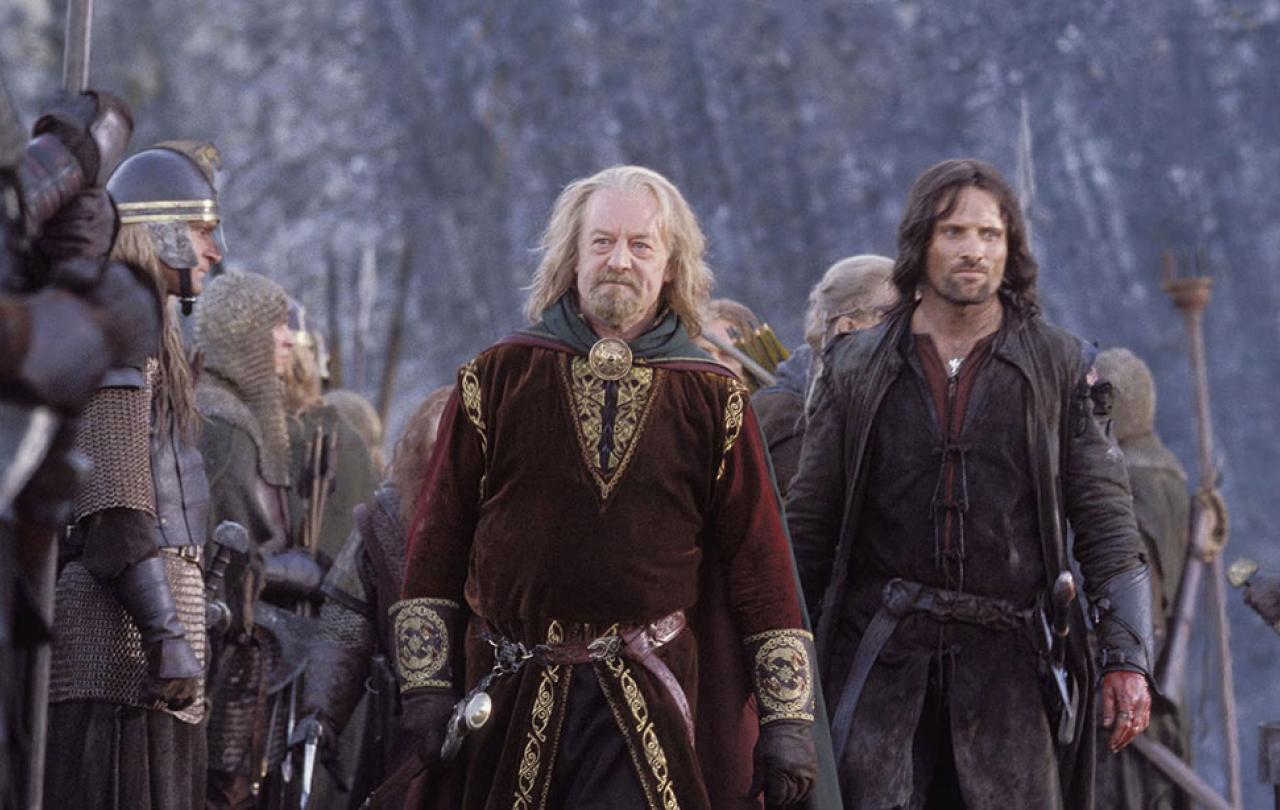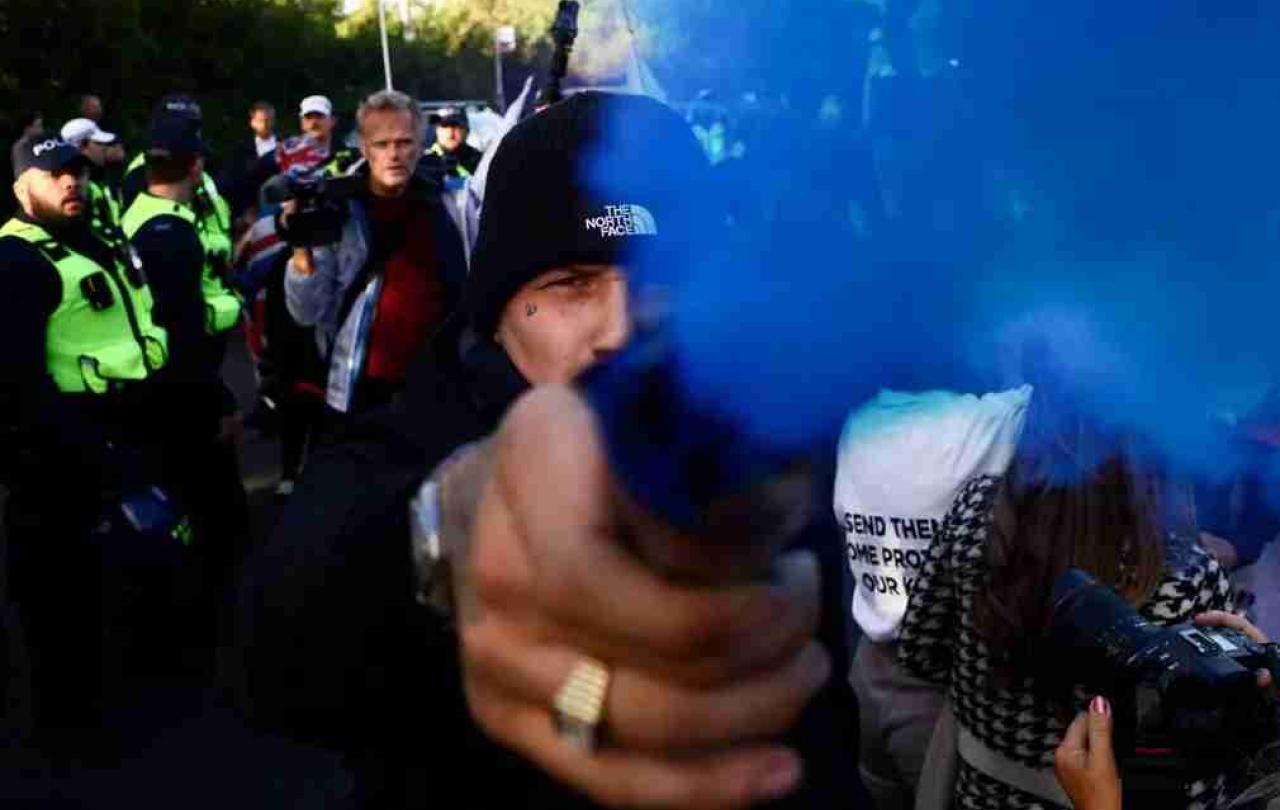
Recently we saw the sad passing of Bernard Hill, one of the great British actors of his generation, whose career enjoyed many high points. Hill came to prominence, in Britain at least, in the 1980s with his role as an unemployed tarmac-layer in the BBC series Boys From the Blackstuff. Through the 1990s, he went on to star in a number of big budget Hollywood feature films, such as The Ghost and The Darkness, Titanic, and The Scorpion King. But his best-known role, the one which won him global recognition, was as King Théoden in Peter Jackson’s Lord of the Rings trilogy.
In both Tolkien’s book and Jackson’s adaptation, the character of King Théoden plays a pivotal role in making a stand against the forces of evil advancing under the banners of first the wizard Saruman the White in The Two Towers, and then the Dark Lord Sauron himself in The Return of the King, the trilogy’s climax.
Théoden’s character arc is as heroic as any in Tolkien’s epic. But perhaps the most memorable moment within it comes when he is first introduced. Gandalf comes to Théoden’s hall of Edoras to rally support against Saruman’s rampaging armies of orcs. But instead of a redoubtable king and ally in the fight against their common enemy, he finds a weak man buckled under the weight of old age and infirmity, cowed by fear and indecision, and enthralled to the counsel of Grima Wormtongue - whom Gandalf reveals to be an agent of Saruman.
In Jackson’s version, Gandalf ‘delivers’ Théoden from his enthrallment, in effect breaking the spell of inertia and inaction which Saruman, through his minion Wormtongue, has cast over him. Théoden awakes from his bondage, is physically rejuvenated, and is now able to rise and take his proper place in the battleline against Sauron’s evil power. In Tolkien’s version, Théoden has more agency. He chooses, at last, to throw off the counsel of Wormtongue and cling to the slim thread of hope which Gandalf represents, however desperate it may seem.
It is a powerful image, and one from which we can and must learn today.
Our ears are open to so many voices through both mainstream and social media that it becomes a matter of extreme importance to be able to discern who is Gandalf and who is Grima Wormtongue?
Few would deny that recent times have revealed new and determined manifestations of evil in our culture and our world. And yet, both inside and outside the church, these latter years have also been characterised by a feeling of helplessness and inaction in the face of such evil. It’s common to hear both men and women complain that they feel unable to speak up in opposition to what they perceive as wrong. They have been silenced. Either those who dare to speak up find themselves cancelled. Or else those who don't self-censor, keeping their mouths shut and their heads well below the parapet. Like Théoden, they lock themselves away in their hall. In this latter case, the battle is ceded without ever having drawn a sword.
As the famous Edmund Burke quote goes: ‘The only thing necessary for the triumph of evil is for good men to do nothing.’ Much of the church, some might dare to say most of it, resides in this place of cowed inaction. Enthralled and confused by the Wormtongue whisperings of the media as mouthpieces for agendas diametrically opposed to the good, we have willingly subjected ourselves to this spell. And the consequence? Like the Westfold of Rohan, the land is burning.
It is not controversial to say anyone who cares about our culture and its future needs to awaken from their slumber. Needs to cast off - or else have cast out - the gag of silence. But what is more troubling perhaps is that, even having done that, we cannot agree on what is evil and what is good.
In the Bible, the devil is portrayed as often masquerading as an angel of light. And it warns against the descent of some cultures into a state of such moral confusion that God’s ordinances are inverted: good is called evil, and evil is called good.
So how are we to navigate our way through this mire of uncertainty? Warnings against misinformation and disinformation abound. And yet, those in positions of power who proclaim them may equally be charged with propagating untruths and dissembling realities, all for the sake of shoring up their own power structures.
All this is to say - our ears are open to so many voices through both mainstream and social media that it becomes a matter of extreme importance to be able to discern who is Gandalf and who is Grima Wormtongue?
Tolkien’s choice of the name Grima Wormtongue is significant. ‘Grima’ derives from the Old Norse word, grímr which means ‘mask’. ‘Worm’ similarly derives from another Old Norse word: ormr which means ‘snake’ or ‘serpent’.
As such, it throws us right back into the Garden of Eden and the honeyed words of the serpent which led humanity into such disaster, offering some purported good up front, while concealing the calamity (and shame) which comes hard on its heels. If we are to stand up and contest the modern manifestations of evil, we must be able to recognise the side of the field of battle on which to take our stand.
Who is Gandalf? In Tolkien’s world, though he hated the idea of his work being interpreted as allegory, Gandalf does represent the Christ figure. And Sauron in turn suggests the Anti-Christ - a nebulous figure arising from scripture, poorly understood at the best of times. But somehow the fountainhead from which, humanity is told, all evil must flow.
But if humanity thinks of Christ on the side of good, and Christ as the most human of us all, perhaps this provides a yardstick by which we can discern the lines of battle.
Is it human or anti-human to stand up for life at its most vulnerable? Is it human or anti-human to stand up for the family unit? Is it human or anti-human to honour and celebrate each and every Imago Dei as they were created to be? Is it human or anti-human to safeguard a parent’s right to speak good into their children’s life? Is it human or anti-human to preserve the innocence of our young? Is it human or anti-human to challenge systems of power which enable all kinds of exploitation and other self-evident evils?
First we must awaken. Then we must choose our side. And finally, like Théoden, we must ride to the fight.
Visit Theodore's web site, and follow him on Instagram and X.





